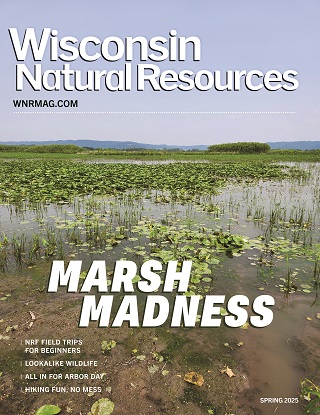Contact: Dan Buckler, DNR Urban Forester
Daniel.Buckler@wisconsin.gov or 608-445-4578
DNR Announces Urban Forestry Monitoring Results For Milwaukee And Madison
The Long-Term Project Will Release Statewide Results In 2026
MADISON, Wis. – The Wisconsin Department of Natural Resources (DNR) today announced that results from a multiyear urban forestry monitoring project are now available for Milwaukee and Madison.
The Urban Forest Inventory and Analysis project established hundreds of permanent plots in both cities to collect tree, vegetation and land use data. Plots were randomly placed on private and public land, giving a unique and holistic perspective into each city’s local trees.
The project used the plots to estimate important forest characteristics like species composition, tree size distribution, invasive species coverage and wood volume.
The key takeaways from these results are:
- Large trees are disproportionately responsible for providing ecosystem services, such as air pollution removal and runoff reduction, because of their leaf area. In Milwaukee and Madison, trees at least 15 inches in diameter contain around half of the city’s leaf area, despite only representing 10% or less of the tree population.
- Trees in Milwaukee provide an estimated $12.6 million in annual benefits to society, while those in Madison provide $11.5 million.
- The high numbers of common buckthorn, particularly on forest land and other lightly maintained areas, threaten the regeneration of desired native species.
Additional information can be found in these resources:
- Milwaukee's Urban Forest in a Nutshell: An infographic summarizing results for Milwaukee
- Madison's Urban Forest in a Nutshell: An infographic summarizing results for Madison
- My City's Trees: A tool that summarizes Urban Forest Inventory and Analysis data by theme (such as watersheds, building age or population density)
- Urban Forest Stats: A tool that allows customized searches and summaries
The project also established 900 plots in other urban areas across the state. Statewide results will be available in 2026. Teams will revisit the plots every seven years to assess change.
The Urban Forest Inventory and Analysis program in Wisconsin is a partnership between the DNR and the USDA Forest Service. The project adapted survey methods from traditional forestry to create a robust monitoring process on urban land, which represents only 3% of the state’s land area but contains 67% of its population.
The project is also collaborating with i-Tree to help convert tree data into estimates of ecosystem services, such as reducing air pollution or stormwater.
To learn more about the Urban Forest Inventory and Analysis program, visit the DNR website.

